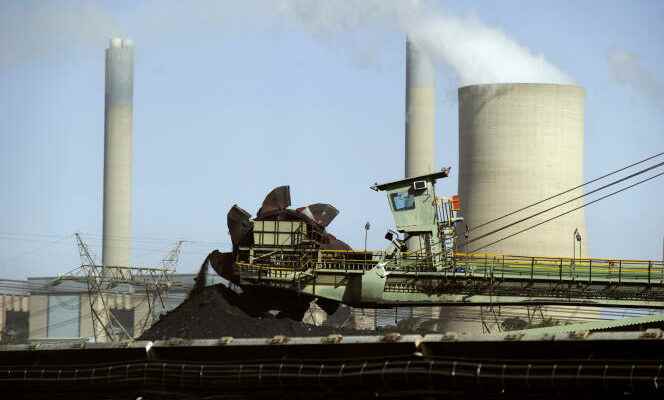To not miss any African news, subscribe to the newsletter of the “World Africa” from this link. Every Saturday at 6 a.m., find a week of news and debates covered by the editorial staff of the “World Africa”.
South Africa had a black month of September, or more exactly in the dark. Affected by an endless series of blackouts, Eskom, the public electricity giant, has only been supplying half of its energy production capacity for several weeks. Or hardly more. To avoid the “black out”, the company multiplies load shedding. They have become almost permanent – 25 days in September, a record. And more and more intense: more than ten hours of cuts accumulated per day for the most affected, at the height of the crisis, in mid-September. A nightmare for individuals, and even more so for businesses.
First affected, the industry. At the head of thirteen factories in the country, the French specialist in building materials Saint-Gobain estimates that it lost up to 20% of its production on certain sites during the month of September. “Some of our factories only run 6 to 7 hours a day instead of 22 or 24 hours. The current is not cut for 17 hours, but with 5 or 6 hours of cut per day, the time that we stop, that we restart, we lose a lot of time “explains the president of the Africa branch of Saint-Gobain, Jean-Claude Lasserre.
The French company is not the only one to encounter difficulties. In the second quarter of 2022, South African GDP contracted by 0.7%, despite the country already suffering from intense load shedding in June. “The whole global economy is idling, but the primary driver of GDP contraction at the local level is load shedding”said Christie Viljoen, economist at the consulting firm PricewaterhouseCoopers.
The impact of the crisis on the currency
Several specialists point in particular to the impact of power cuts on the production of the mining sector, a pillar of the South African economy, whose production fell by 3.5% in the last quarter compared to the previous year. A slide that should continue, suggesting the first indicators of industrial activity in the third quarter of 2022.
Trade, which consumes less energy, is not spared. Another French company well established in South Africa, Leroy Merlin has four stores in Johannesburg. To keep its stores open during load shedding, the company uses diesel-powered generators. Its electricity bill then jumped by some 40%, estimates its CEO in South Africa, Cédric Sennepin. Although he notes that the overall cost of energy remains much lower in South Africa than in Europe, the increase in charges “will eventually have an impact on prices one day or another, because our suppliers will also suffer the same thing”, judge responsible.
You have 55.22% of this article left to read. The following is for subscribers only.
